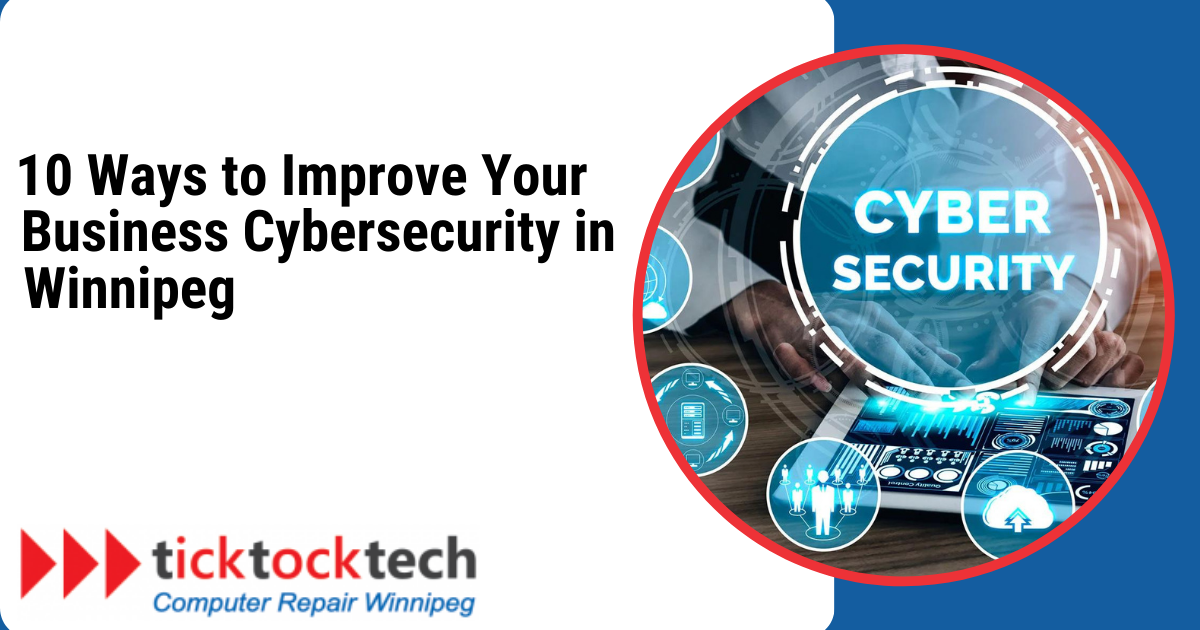The surge in cyber attacks and social engineering scams makes it more important to take cybersecurity seriously. Both individuals and businesses are affected by these dubious activities. When talking about “businesses” being targeted for these cyber attacks, it does not exclude small and medium enterprise businesses. The statistic shows small firms account for 43% of all cyber attacks each year, with small businesses having 1,000 or fewer employees accounting for 46% of all cyber attacks.
Cyber attacks cost small and medium-sized businesses (SMBs) $25,000 on average. Not to be a pessimist, this will continue to increase in 2024, as these cyber criminals understand how vulnerable most small businesses are. These attacks could steal money from you, or cause a downtime for your business IT infrastructures.
1. Implement Anti Virus and Anti Malware on all IT Devices
Anti-virus software is actually the first program that every computer user should install, so this is definitely what you are familiar with. On the other hand, for enterprises, this goes beyond computers and antivirus software to incorporate anti-malware software. Anti-virus (AV) and anti-malware technologies are essential for combating dangerous online threats. This software will protect your device against malware and viruses that could contaminate your data. Choosing antivirus software from reputable vendors and making sure your device has just one loaded antivirus package are essential.
Related: 10 best anti virus and anti malware software in 2024
It is essential to utilize both firewalls and anti-virus software to safeguard your data against malicious attacks. In order to stop hackers, viruses, and other potentially harmful Internet activities, a firewall acts as a sentinel, monitoring all incoming and outgoing data traffic. Built-in firewalls in widely used operating systems like Windows and Mac OS X are called the Windows Firewall and the Mac Firewall, respectively. Your router need to have a built-in firewall to safeguard your network from potential attacks.
2. Two factor Verification
Online security is greatly improved with multifactor authentication, also referred to as two-factor authentication or two-step factor authentication. Reputable websites and apps employ it as an additional security feature to safeguard your identity. Organizations including banks, social media sites, businesses, and educational institutions employ this extra precaution to bolster security.
Using many factors increases the level of difficulty as opposed to relying solely on a password, which is susceptible to theft, reuse, and other security flaws. Hackers would find it far more difficult to replicate this second verification phase. Data protection, server security, website security, and computer security are all improved by using this tactic. Microsoft 2FA can be integrated with PCs and websites, however this will need for a second OTP.
3. Regular Data Backup and Security
The first thing to do with every gadget that uses data is to back up the data. A common misconception that many businesses overlook is the need of routine data backups in reducing the complexity of data loss in network servers. Relying solely on system redundancy and archiving important datasets seldom could be problematic. It’s important to realize that redundancy isn’t always dependable, which exposes your private information.
Related: Importance of Data Backup in 2024
Additionally, according to the 3-2-1 backup rule, you should keep three copies of your data—one primary copy and two backup copies—on two different types of media, such as local and cloud, with at least one copy kept offshore. It’s a solid place to start when it comes to data protection and redundancy. It is imperative that enterprises use robust cloud databases for backup, such AWS or equivalents.

To ensure the protection of your data, you need to implement a frequent backup strategy. Having a weekly backup plan increases defenses against unplanned disasters rather than relying on irregular archives. Maintaining uniform data backup procedures is essential for risk mitigation and business continuity.
4. Automated Software Updates
Operating system and software updates automatically are the foundation of robust cybersecurity. They serve as a virtual barrier to keep your devices safe from harm. These versions usually feature security enhancements, bug fixes, and patches for vulnerabilities found by the sector. Any IT equipment that runs software needs to have its updates installed, ideally automatically. This is especially important if the equipment is utilized for business purposes. When a newer version is released by the manufacturer, this will guarantee updates.
See Also: Top 10 Importance of Regular Software Updates in 2024
By turning on automated upgrades in 2024, you could be able to continuously strengthen your system and do away with the requirement for continual human input. This makes the process easier and guarantees that your devices are running the most recent security patches, which reduces the possibility that they may become the target of cyberattacks. You may quickly and effectively strengthen your overall digital security posture by using this method.
5. Firewall Implementations
An integral component of any cybersecurity strategy is a firewall. It acts as a firewall to protect your data and stop unauthorized access to the network connected to your business. In order to improve cybersecurity for your business in 2024, you need to implement firewall solutions that are customized to meet your specific needs. This entails setting up firewalls to only allow traffic from reliable sources and routinely patching and updating them to keep them safe from the most recent threats.
Related: 10 Best Firewall for businesses
For example, a small business with distant workers can use a virtual private network (VPN) to safely link staff members to the company’s network. By putting in place a VPN, the business can ensure that all employee connections are secure and encrypted, preventing unauthorized access to critical information.
6. Disaster Recovery Plans
The methods for restoring to regular business operations after a disruptive event are detailed in a company’s disaster recovery plan (DRP). Businesses must secure assets, minimize downtime, and provide continuity in the case of a catastrophe.
A comprehensive disaster recovery plan (DRP) addresses a wide range of calamities, including man-made disasters like cyberattacks and data breaches, natural disasters like floods and earthquakes, and operational disruptions like server malfunctions and power outages. It provides an adaptable framework for healing.
Create a comprehensive disaster recovery strategy that includes regular backups, safe storage, and a specified protocol for retrieving data and systems. Test the plan on a regular basis, and make sure outside contractors and vendors are participating. Use redundant systems and prioritize data recovery to ensure business continuity.
7. Use of Cybersecurity Framework
A cybersecurity framework is an aggregation of best practices and rules for safeguarding your company’s infrastructure and data. By establishing a cybersecurity framework, you can make sure that your company complies with industry-recognized cybersecurity guidelines and safeguard your finances and reputation in the case of a breach.

Within the industry, the National Institute of Standards and Technology (NIST) cybersecurity framework is widely acknowledged. By implementing security controls, prioritizing threats, and regularly monitoring and evaluating your company’s cybersecurity posture, this framework provides a methodical way to managing cybersecurity risks.
8. Cloud Security Solutions
Cloud computing is becoming more and more popular among enterprises due to its advantages over traditional on-premise systems in terms of cost, scalability, and flexibility. However, moving to the cloud exposes you to extra cybersecurity risks including unauthorized access and data breaches.
You must implement cloud security solutions that meet the needs of your business in order to lessen these risks. One kind of cloud security solution is encryption. Data encryption ensures the security of your company’s information, even if unauthorized individuals take or view it. Identity and access management, or IAM, is an extra solution that guarantees authorized users can only access your company’s cloud-based services.
9. Network Security
Secure both your home and office wireless networks to protect your business from potential cyber attacks. Experts recommend using a virtual private network (VPN) to secure your data, updating your network’s firmware, modifying the network’s name and password, enabling encryption (ideally WPA 2 or WPA 3), creating a network specifically for smart devices, blocking remote administrative access, and regularly updating all connected devices. It will be possible to build safe networks by carrying out these steps.

See: How to secure home wifi network
10. Advanced Threat Protections
Investing in advanced threat defense is essential for businesses looking to stay ahead of the latest cyber dangers. Behavioral analytics, sandboxing, and intrusion detection and prevention systems are some of these security techniques.
Intrusion detection and prevention systems (IDPS) scan network traffic for signs of malicious activity or unauthorized access. Behavioral analytics uses machine learning to identify and highlight potentially dangerous aberrant patterns of behavior. Sandboxing gives you the chance to look through and fix dubious emails and files in a virtual setting before they cause damage.
For example, a large shop can use advanced threat security to identify and prevent ransomware assaults, which are growing more common and expensive. The merchant may use IDPS and behavioral analytics to identify and report suspicious activity before it becomes a severe problem.
Take Away – 10 Ways to Improve Your Business Cybersecurity in 2024
In conclusion, safeguarding your business against escalating cyber threats in 2024 is imperative. With cyber attacks on the rise, businesses, including small enterprises, are vulnerable to financial losses and operational disruptions. Prioritize cybersecurity measures: implement robust antivirus and anti-malware, embrace two-factor verification, establish regular data backups, automate software updates, fortify firewall implementations.
Also, devise comprehensive disaster recovery plans, adhere to cybersecurity frameworks, deploy cloud security solutions, enhance network security, and invest in advanced threat protections. For comprehensive cybersecurity solutions, consider TickTockTech Computer Repair Winnipeg to fortify your business against evolving cyber risks.

